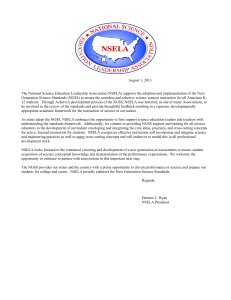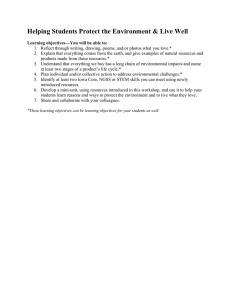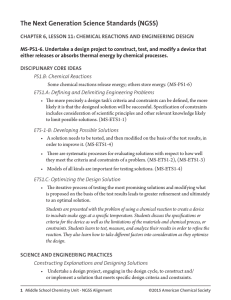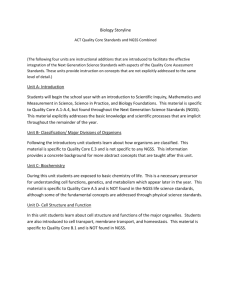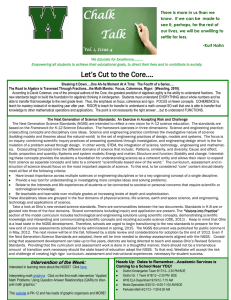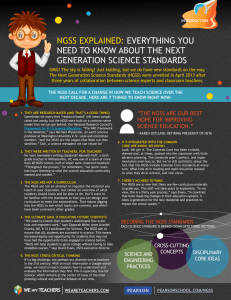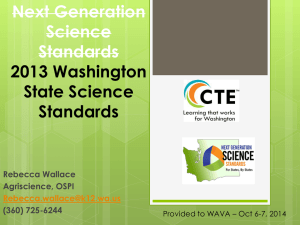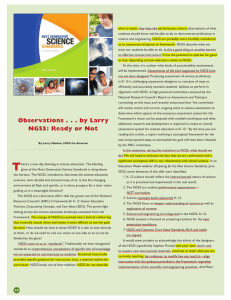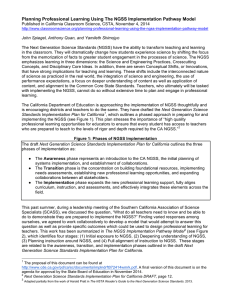how to integrate the ngss without going crazy
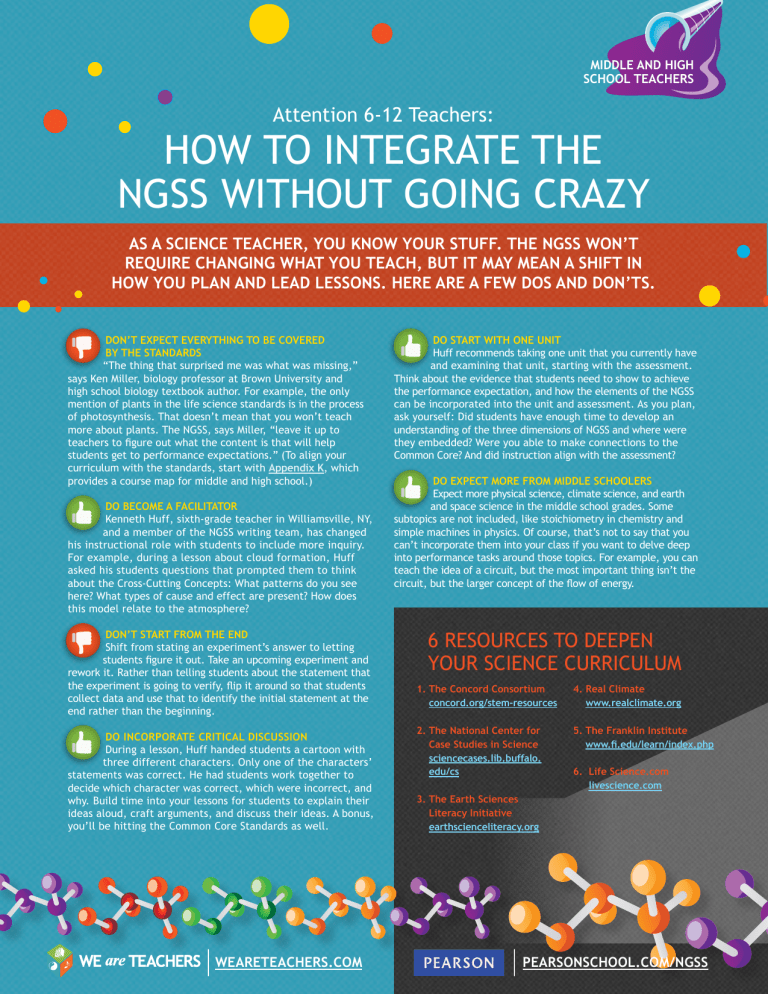
MIDDLE AND HIGH
SCHOOL TEACHERS
Attention 6-12 Teachers:
HOW TO INTEGRATE THE
NGSS WITHOUT GOING CRAZY
How to Integrate the Next Generation Science
Standards (NGSS) Without Going Crazy
DON’T EXPECT EVERYTHING TO BE COVERED
BY THE STANDARDS
“The thing that surprised me was what was missing,” says Ken Miller, biology professor at Brown University and high school biology textbook author. For example, the only mention of plants in the life science standards is in the process of photosynthesis. That doesn’t mean that you won’t teach more about plants. The NGSS, says Miller, “leave it up to teachers to figure out what the content is that will help students get to performance expectations.” (To align your curriculum with the standards, start with Appendix K , which provides a course map for middle and high school.)
DO BECOME A FACILITATOR
Kenneth Huff, sixth-grade teacher in Williamsville, NY, and a member of the NGSS writing team, has changed his instructional role with students to include more inquiry.
For example, during a lesson about cloud formation, Huff asked his students questions that prompted them to think about the Cross-Cutting Concepts: What patterns do you see here? What types of cause and effect are present? How does this model relate to the atmosphere?
DON’T START FROM THE END
Shift from stating an experiment’s answer to letting students figure it out. Take an upcoming experiment and rework it. Rather than telling students about the statement that the experiment is going to verify, flip it around so that students collect data and use that to identify the initial statement at the end rather than the beginning.
DO INCORPORATE CRITICAL DISCUSSION
During a lesson, Huff handed students a cartoon with three different characters. Only one of the characters’ statements was correct. He had students work together to decide which character was correct, which were incorrect, and why. Build time into your lessons for students to explain their ideas aloud, craft arguments, and discuss their ideas. A bonus, you’ll be hitting the Common Core Standards as well.
DO START WITH ONE UNIT
Huff recommends taking one unit that you currently have and examining that unit, starting with the assessment.
Think about the evidence that students need to show to achieve the performance expectation, and how the elements of the NGSS can be incorporated into the unit and assessment. As you plan, ask yourself: Did students have enough time to develop an understanding of the three dimensions of NGSS and where were they embedded? Were you able to make connections to the
Common Core? And did instruction align with the assessment?
DO EXPECT MORE FROM MIDDLE SCHOOLERS
Expect more physical science, climate science, and earth and space science in the middle school grades. Some subtopics are not included, like stoichiometry in chemistry and simple machines in physics. Of course, that’s not to say that you can’t incorporate them into your class if you want to delve deep into performance tasks around those topics. For example, you can teach the idea of a circuit, but the most important thing isn’t the circuit, but the larger concept of the flow of energy.
6 RESOURCES TO DEEPEN
YOUR SCIENCE CURRICULUM
1. The Concord Consortium concord.org/stem-resources
2. The National Center for
Case Studies in Science sciencecases.lib.buffalo.
edu/cs
3. The Earth Sciences
Literacy Initiative earthscienceliteracy.org
4. Real Climate www.realclimate.org
5. The Franklin Institute www.fi.edu/learn/index.php
6. Life Science.com livescience.com
WEARETEACHERS.COM
PEARSONSCHOOL.COM/NGSS

